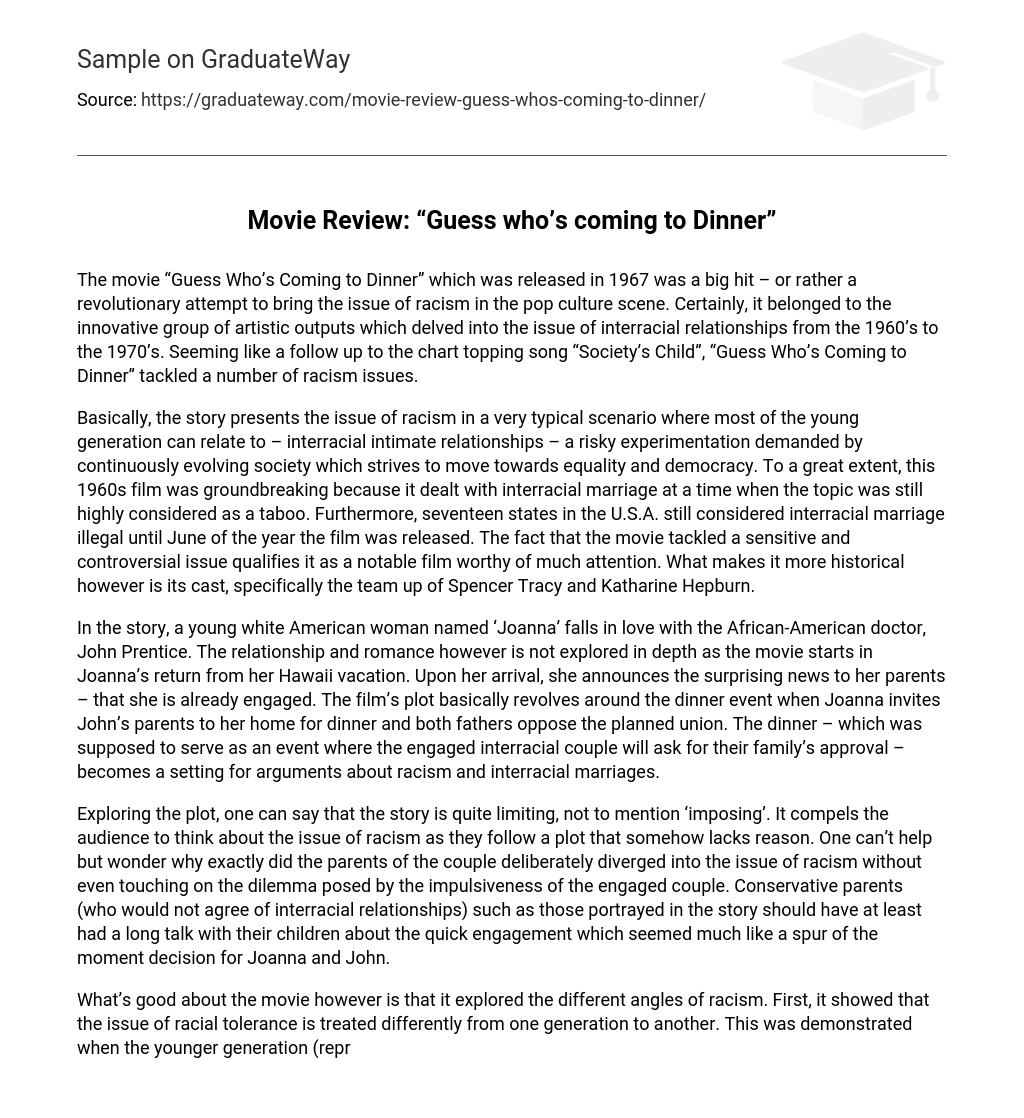The movie “Guess Who’s Coming to Dinner” which was released in 1967 was a big hit – or rather a revolutionary attempt to bring the issue of racism in the pop culture scene. Certainly, it belonged to the innovative group of artistic outputs which delved into the issue of interracial relationships from the 1960’s to the 1970’s. Seeming like a follow up to the chart topping song “Society’s Child”, “Guess Who’s Coming to Dinner” tackled a number of racism issues.
Basically, the story presents the issue of racism in a very typical scenario where most of the young generation can relate to – interracial intimate relationships – a risky experimentation demanded by continuously evolving society which strives to move towards equality and democracy. To a great extent, this 1960s film was groundbreaking because it dealt with interracial marriage at a time when the topic was still highly considered as a taboo. Furthermore, seventeen states in the U.S.A. still considered interracial marriage illegal until June of the year the film was released. The fact that the movie tackled a sensitive and controversial issue qualifies it as a notable film worthy of much attention. What makes it more historical however is its cast, specifically the team up of Spencer Tracy and Katharine Hepburn.
In the story, a young white American woman named ‘Joanna’ falls in love with the African-American doctor, John Prentice. The relationship and romance however is not explored in depth as the movie starts in Joanna’s return from her Hawaii vacation. Upon her arrival, she announces the surprising news to her parents – that she is already engaged. The film’s plot basically revolves around the dinner event when Joanna invites John’s parents to her home for dinner and both fathers oppose the planned union. The dinner – which was supposed to serve as an event where the engaged interracial couple will ask for their family’s approval – becomes a setting for arguments about racism and interracial marriages.
Exploring the plot, one can say that the story is quite limiting, not to mention ‘imposing’. It compels the audience to think about the issue of racism as they follow a plot that somehow lacks reason. One can’t help but wonder why exactly did the parents of the couple deliberately diverged into the issue of racism without even touching on the dilemma posed by the impulsiveness of the engaged couple. Conservative parents (who would not agree of interracial relationships) such as those portrayed in the story should have at least had a long talk with their children about the quick engagement which seemed much like a spur of the moment decision for Joanna and John.
What’s good about the movie however is that it explored the different angles of racism. First, it showed that the issue of racial tolerance is treated differently from one generation to another. This was demonstrated when the younger generation (represented by Joanna and John) approved of interracial relationship while the earlier generation (represented by the parents) held a more conservative view and opposed such bond.
Another angle that the movie explored is racism as a personal predicament. There was a remarkable scene were John confronts his father. “You see yourself as a black man, I see myself as a man”, he tells his father. Basically, this statement implies that at times, racial discrimination can be self inflicted. Following the beliefs which are popular in the society – for example, White Supremacy, a Black person can actually treat themselves as inferior to the Whites. They can limit their ability to gain skills and knowledge that are typical only among the supposedly superior Whites.





